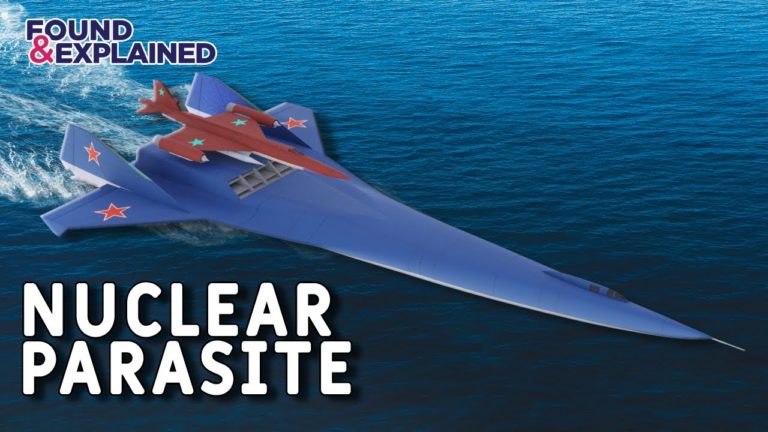The Most Overkill Bomber Ever – Bartini A-57
In the late 1950s, there were rumors of a radical new aircraft design from deep within the USSR.
It would be a flying boat that could fly vertically, carried the biggest nuclear weapon the Soviets could muster and had its own parasite fighter capable of scouting, defense and independent strikes.
This flying monster could land anywhere, from water to desert, to snow and ice, and would be refueled from submarines in remote lagoons and lakes. All with only a crew of three and a range to reach the distant shores of the united states.
But this incredible concept from an even more incredible engineer never happened. And the USSR passed on what could have turned the tide of nuclear fever.
Welcome to the most overkill bomber aircraft ever designed, the Bartnini A-57.
By the late 1950s, the Cold War was at full thrust, pitching the military might and scientific minds of the United States and the Soviet Union against each other. The arms race between the two superpowers was at fever pitch and it looked like things might be heating up soon.
The atomic age was well into its maturity and both countries were frantically developing ways in which to deliver intercontinental ballistic missiles or ICBMs as payloads.
The Bartini A-57 was one such project by the USSR.
Envisaged was a massive sea-launched intercontinental bomber that would be immune from taking off from land-based air fields, which were always much more vulnerable to enemy attacks and reconnaissance.
How the Bartini A-57 bomber was designed to achieve this was inventive to say the least.
The way in which it would take off and how it would be fuelled were just two of the innovations devised by the A-57 concept.
And there’s good reason why the Bartini A-57 has been dubbed ‘a beast of an aircraft,’ given that it was technically a flying boat.
Let’s dive right in, shall we!
First thing’s first: the A-57, as designed in 1957, would have hauled a 244N thermonuclear bomb on board.
That is very Important for the time, given that 1957 was slap bang in the middle of the hyper-paranoid atomic age and escalating arms race.
Even though it was a large bomber carrying an city destroying nuke, it would have needed a crew of just three.
The A-57 would weigh in at 320 tonnes or 705 pounds, having a total length of 69.5 metres or 228 feet and a total wing area of 755 square metres or 8,127 square feet.
Importantly, although designed to avoid land-based airfields, the A-57 was equipped with skids for airfield landings, if so needed.
The aerodynamic configuration of the A-57 was quite revolutionary for its time, particularly with regard to its wings.
The leading edge of the wing had a sweep angle which became stepped, thereby simplifying the wing’s load-bearing surface.
It also created what is called a ‘self-balancing’ wing. This feature of its wings enhanced the aerodynamic capabilities of the aircraft, allowing it to reach subsonic and supersonic speeds with relative ease, especially for a large flying boat bomber of that era. This design of wing would be known as the ‘Bartini wing’.
For take off from water, the aircraft was fitted with ski chassis consisting of hydro-skis and underwater wings.
The landing gear, not allowed the A-57 to land on and take-off from both water and the ground but also from snow.
It is believed that the A-57 could take off from any unpaved airfield with a runway not less than 3,000 meters or 9,842 feet long,
as well as a smooth snow-covered strip with a length of 3,600 meters or 11,811 feet without using its accelerators. So you can see, this plane really was designed to take off from anywhere.
Worth noting is that this ability to take off on snow and ice would have made it possible to use forward-based airfields on drifting ice floes located in the Arctic region,or even ice burgs if they were bit enough.
The larger version of the aircraft was called the Amerika – that’s with a ‘k’ – hence the ‘A’ designation in A-57, as its intended target was obviously the United States.
A smaller, shorter-range flying boat was also designed which could reach targets in Europe that were closer to the Soviet Union, and it was named the Ye-57, with the ‘Ye’ derived from the Russian word for Europe, which is Yevropa.
Do not forget to share your opinion with us to provide you with the best posts !




0 Comments